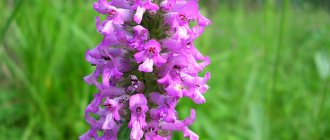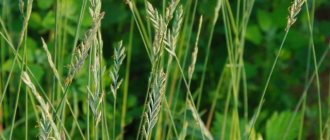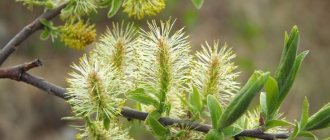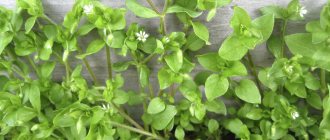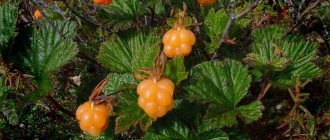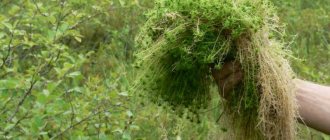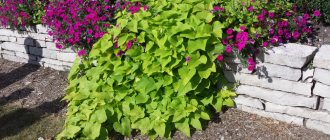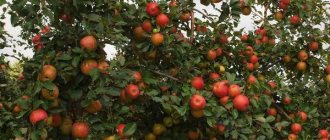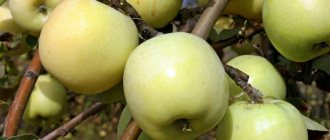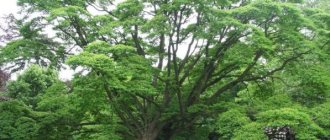Quote from Stlani's message
Read in full In your quotation book or community!
Yellow snowdrop. Goose onion. Gagea. GOOSE ONION, or yellow snowdrop (yellow flower)
GOOSE ONION, or YELLOW SNOWDROP (gagea, gagea, lat. Gagea). Common names: bird's onion, yellow gooseberry, yellow snowdrop, viper's onion, yellow flower. The generic Latin name comes from the surname of the English amateur botanist T. Gage (Thomas Gage, 1781-1820). Previously, some types of goose onions were used in folk medicine, and were also eaten boiled.
Once upon a time there were a lot of goose onions in the meadows and forest clearings. And old people say that flocks of wild geese always descended on these meadows and clearings in the spring to rest here after a difficult journey and nibble onion shoots, which they loved very much... This is where the full name of this early spring flower came from - goose onion. And it’s true, as soon as the first goose onion flowers appear, flocks of migratory geese immediately appear high, high in the sky, flying in the spring from south to north, to their homeland.
It is a small genus of small plants in the lily family; a low-growing perennial bulbous herbaceous plant with six small yellow flowers and a small bulb from 8 to 15 cm in height. These are the smallest plants in the lily subfamily - from 3 to 35 cm in height. The flowers are collected in a bunch on a low stem. And next to the stem, one long and narrow leaf rises from the ground. Tepals are 13 -18 mm long, lanceolate, obtuse, greenish on the outside, stamens are half as long as the perianth. The fruit is a spherical capsule. In the evening and in bad weather, the inflorescences close tightly, and since the petals are greenish on the outside, they become invisible to the eye. The fruits ripen in May-June.
Yellow snowdrop blooms early in spring in April. Their yellow star-shaped flowers cover mountain meadows, gravelly slopes and rock cracks in the spring; they are found in the steppe, sometimes on saline soil and on limestone, in separate clumps in deciduous forests and on lawns in parks or, like weeds, in crops.
Goose onions grow in steppes and forests, on dry mountain slopes and in semi-deserts and among bushes. There are about 100 species in the temperate zone of Eurasia, including Russia, Belarus, Ukraine, the Caucasus, Siberia, the Far East, and Central Asia. In the forest zone, the most common yellow goose onion (G. lutea). Many species of goose onions are eaten by animals on pastures, but have no significant feed value.
For medicinal purposes, bulbs are used, which are harvested in the spring - before flowering and in the fall. The chemical composition has not been sufficiently studied. The entire plant is known to contain garlic essential oils, which contain sulfur. Traditional medicine almost never used goose onions.
Previously, a decoction of the bulbs was taken orally for dropsy, edema, jaundice, and bronchial asthma. Crushed bulbs were applied externally to improve the reparative processes of ulcers, long-term non-healing wounds, and erosions. A decoction of the bulbs in milk is given to children in small doses for epilepsy. Crushed bulbs are used as an external wound healing agent.
The gooseberry is also interesting as an edible plant. The bulbs are edible; the leaves, which have a distinctive garlicky smell, are used to make salads. Small onions are edible boiled and baked. In the old days, during lean years, peasants collected the bulbs of this herb, dried them, ground them and mixed them with bread.
Method of preparation and use: cook 1 tablespoon of fresh goose onions for 5 minutes in 0.5 cups of boiling water, leave for 1-2 hours, strain. Take 1 tablespoon 3-4 times a day.
Kinds
Goose, or bird's onion, geijia (lat. Gagea) is a genus of bulbous plants from the Liliaceae family. It includes about 90 species distributed in Eurasia and North Africa. In Russia, 5 varieties of this flower are most famous. The plant received its scientific species name in honor of the botanist Sir Thomas Gage (1781-1820).
The most popular types of wild goose onions in Russia:
- meadow (Gagea pratensis);
- small (Gagea minima);
- blushing (lat. Gagea erubescens);
- field (Gagea arvensis);
- yellow (Gagea lutea (L.).
Representatives of the genus grow in various habitats - in forests, bushes, meadows, desert and rocky areas.
Botanical description of goose onion, its popular types
Goose onion, a perennial primrose from the lily family, has other names. It is called bird's onion or viper's onion, yellow snowdrop or bluebell, yellow eider or yellowflower.
The goose onion in the photo can be considered both a wild and an ornamental plant. It can be seen in meadows and forest clearings where wild geese loved to rest. They always plucked the first green sprouts of onions, which is why the people got the name for this crop: goose onion, and the generic Latin name is the surname of a botanist from England - T. Gage (Thomas Gage, 1781-1820). In villages, the plant was considered medicinal and was eaten. We will tell you what goose onions look like and what varieties of plants can be found in nature and in garden plots.
Goose onions - description
This is a small perennial plant. It forms underground oval or spherical bulbs, covered with dry husks and sometimes with a flange of leaf debris. One stem grows from the bulb, 10 to 30 cm high and 3-12 mm wide. The lower leaves grow directly from the bulb, and the upper stem leaves grow under the inflorescence of the plant. They are opposite, narrowly lanceolate in shape. The length of the leaves usually exceeds the length of the flowers. Small tulip-like flowers are collected in umbrella inflorescences (containing from 1 to 7 flowers). They are light yellow in color and grow on petioles. Their petals are greenish on the outside, so when they are closed at night and in rainy weather, they blend in with the surrounding greenery.
Flowers appear from March to May. They are pollinated by various insects (mainly beetles), but if necessary they can pollinate themselves. The plant can easily reproduce not only vegetatively - by bulbs, but also with the help of seeds that are carried by the wind or ants. After the flowering period, the entire above-ground part of the flower dries out. In summer, the bulb remaining in the ground goes into a dormant period. The perennial flower produces tiny bulbs each year that grow into a fairly large clump over time.
Many species of this flower have been included in the list of rare plants of the Vologda region since 1993. It is necessary to search for new habitats for varieties of goose onions. The Red Book of the Republic of Karelia and Arkhangelsk Region includes it in the list of endangered plants. The flower needs proper botanical control in the Novgorod and Kirov regions.
Description
Goose onions – photo and description:
- the shortest plant from the lily subfamily: height – 3-35 cm;
- the smallest onions: in one shell there can be 2 of them of different sizes;
- the low stem ends in a bunch of flowers;
- a narrow leaf grows from the soil next to the stem;
- the perianth has lanceolate leaves up to 13-18 mm, their shape is obtuse, the color is greenish on the outside, yellow, whitish or reddish on the top;
- perianth twice as long as stamens;
- fruits are spherical capsules, ripen in May-June;
- in the evening and in bad weather the inflorescences are always tightly closed.
Interesting to know! Previously, healers used onion decoctions to treat dropsy, edema, jaundice, and bronchial asthma. Small children were treated with a decoction of milk in small doses for epilepsy. Externally, lotions with crushed onions were applied to ulcers, wounds, and erosions for better healing.
Nowadays traditional medicine rarely uses the plant due to its insufficiently studied composition. But sulfur, which is part of garlic essential oils, is used for treatment, so the bulbs are harvested in the spring.
The leaves of the plant, which smell like garlic and other early vegetables, make a tasty and healthy salad; the bulbs can be baked and boiled. In the old days, during a lean year, peasants dried the onions and ground them, then added them to flour to make bread.
Growing Requirements
Goose onion is a plant most often found in deciduous forests, bush thickets and in damp areas (for example, near bodies of water). This small perennial flower is not particularly demanding of environmental conditions, although it prefers sunny positions and permeable sandy-clay soils rich in nitrogen and calcium. This plant is relatively tolerant of low temperatures, but when grown in the garden in the fall, it should be covered with fallen leaves. Under natural conditions, it is precisely this protection that helps the flower survive the winter.
Goose onions are not susceptible to diseases and pests, but the wrong choice of place to grow the plant (for example, too wet soil) can cause rotting of the bulbs or poor flowering.
If you want to grow bird onions in your own garden, you need to provide them with conditions that are as close to natural as possible. Therefore, it is better to choose a place for the flower under trees and shrubs or plant it in the company of other spring bulbous plants (for example, violets). Goose onions are great for growing in naturalistic gardens. However, it should be remembered that a planted single bulb will not give any noticeable decorative effect. It is best to plant at least a dozen bulbs, which will produce beautiful greenery in early spring with lots of decorative yellow flowers. The planting site should be marked visibly so that during summer and autumn work in the garden the bulbs hidden underground are not damaged. When caring for a flower, it is worth protecting your hands with gloves, since the sap of the plant can sometimes cause skin irritation or allergic reactions.
Botanical characteristics
Yellow goosebush is a low perennial of the lily family that blooms in steppes, forests, dry mountain slopes and semi-deserts in early to mid-April. It is very unpretentious and can live on gravelly slopes, rock crevices, limestone and even saline soils.
Onion is a small herbaceous plant with a height of 8 to 15 cm. Its stem is thin, and next to it a single long narrow leaf rises from the ground. Gooseberry flowers have six small petals, bright yellow on the inside and greenish on the outside, they are collected in small bouquets on stems. Flowers are laid in the fall in quantities from 2 to 10 pieces, and the final formation and growth of shoots is completed by the end of winter. Flowering begins in early spring, but after a little more than a month the stem and leaves die, and only the bulb filled with nutrients remains in the ground.
The perianth leaves are obtuse, lanceolate-shaped, greenish on the outside, and their length ranges from 13 to 18 mm. Goose onions reproduce by bulbs. Its fruits are small spherical boxes. The beginning of their ripening period occurs in May and June, and ripening is completed only by the following spring.
In the evening and in bad weather, the inflorescences close tightly and become almost invisible due to the green color of the outer side of the petals.
Today there are about one hundred varieties of goose onions. Africa is considered its homeland. It was from there that at one time it came to European countries and then spread widely across the entire width of the temperate climatic zone of the Eurasian continent.
Medicinal properties
Goose onions contain saponins, glycosides, flavonoids, coumarins, and phenolic acids. In addition, it contains essential oil, tannins, fatty oils, alkaloids, and vitamin C.
Medicinal properties:
- antipyretic;
- diuretic;
- expectorant;
- diaphoretic;
- antiviral and antibacterial action.
The plant also has a beneficial effect on the body during the healing of wounds and ulcers.
Mr. Summer Resident recommends: the medicinal properties of goose onions and its various uses
Goose onions contain many useful substances. Among them are saponins, phenolic acids, glycosides, coumarins and flavonoids. The list can be supplemented with essential oils, vitamins, tannins and alkaloids.
Thanks to its unique composition, yellow snowdrop has antipyretic, antibacterial, diuretic, antiviral, expectorant, healing and diaphoretic properties.
When preparing healing mixtures, you can use flowers, bulbs and leaf blades. For example, to create a tincture that is used for gastrointestinal problems, you will need dried herbs and alcohol. The ingredients are taken in a ratio of 1:5. The resulting composition is infused for a week. The finished solution must be filtered. You need to add honey to it.
A decoction is prepared from fresh bulbs, which can help with bronchial asthma, swelling and hepatitis. First, the heads are thoroughly crushed, and then poured with one glass of boiling water. The resulting mixture is simmered over low heat for 5-10 minutes. The medicine should be kept in the refrigerator. Beneficial properties last for 14 days.
An ointment is made from onion pulp, fish oil and butter to prevent bacterial and fungal infections. Yellow snowdrop is a powerful remedy, so using it without experience and relevant knowledge is strictly prohibited. Before starting treatment, you should consult with your doctor.
A significant reason for the use of medicines prepared from goose onions are pathologies of the respiratory, urinary, musculoskeletal, and digestive systems. The list can be supplemented with skin ailments.
For medicinal purposes, bulbs that were harvested before the flowering period are used. The yellow snowdrop is also considered an edible plant. Both leaves and bulbs are eaten. The latter are baked and boiled.
Bright primrose is often used to decorate various flower arrangements. Due to the fact that goose onions are not picky, they can be combined with cereals, herbs and foliage plants. The main thing is that the neighbors do not shade the yellow snowdrop. Otherwise, its growth will slow down greatly. The same will happen if garden crops planted nearby need abundant watering.
Indications
Goose onions help in the treatment of many ailments, which include:
- sore throat and sinusitis;
- upper respiratory tract infections;
- bacteriosis of the gastrointestinal tract;
- skin infections (bacterial);
- cough, hoarseness of voice;
- infected wounds;
- diseases of the kidneys, bladder, urinary tract;
- rheumatic diseases.
The herb has a beneficial effect on the gastrointestinal tract, helping to overcome high acidity, heartburn, and diarrhea.
Indications for use
It is worth noting that heyjia is not included in the official list of medicinal plants. But, despite the fact that traditional medicine does not use the healing properties of goose onions, traditional medicine uses the plant in the treatment of diseases such as:
- Avitaminosis;
- Edema;
- Hepatitis;
- Open wounds (including difficult and long-term non-healing);
- Trophic ulcers;
- Epilepsy;
- Bronchial asthma (as an addition to basic therapy).
Another area of application of the plant is cosmetology. Goose onion has proven itself to be an effective remedy for acne. In addition, masks based on it are used to cleanse heavily contaminated, porous skin, get rid of freckles, and improve complexion. In combination with natural honey, yellow snowdrop stimulates hair growth.
Mode of application
The bulbs, leaves, and flowers of the plant are used for medicinal purposes.
- Tincture. To prepare a medicinal tincture from a plant, add 1 part of dry herb with flowers to 5 parts of 40% alcohol and leave to infuse for 7 days. After this mixture must be filtered and mixed with honey 1:1. Take 2 teaspoons 2-4 times a day for gastrointestinal problems.
- Decoction. To prepare a universal decoction from the plant, chop its fresh bulbs and pour half a glass of boiling water over them. Then cook, stirring, over low heat for 5 minutes. The broth must be cooled to room temperature and strained. The drug is taken orally, one tablespoon 3-6 times a day for swelling, hepatitis, and bronchial asthma. Treatment should last for 2 weeks with a break of a month, then the course can be repeated. The product should be stored in the refrigerator for no more than one and a half days.
- The ointment from the plant is suitable for treating difficult to heal wounds, especially those infected with bacteria and fungi. To prepare it, 1 part of the gruel from the grass bulbs should be combined with 3-5 parts of butter and fish oil.
Gooseberry is used in the treatment of various diseases, but since its effects are very strong, using the herb without proper knowledge and experience can be dangerous to health, so you should not experiment with the plant on your own.
Beneficial features
Goose onion grass, like all onions, is rich in garlic essential oils, which contain sulfur. The same essential oils are also found in plant bulbs, which are used in folk medicine to treat liver diseases, bronchial asthma, poorly healing wounds, erosions and ulcers, and also as a decongestant. A decoction of gooseberry prepared in milk was given to young children to prevent epileptic seizures.
In addition to essential oils, the chemical composition of the bulbs contains B vitamins, ascorbic acid, carotene, fiber, organic acids, enzymes, sugars, calcium, sulfur, phosphorus, nitrogen compounds, flavonoids, saponins, glycosides and other equally valuable components.
As a medicinal raw material, yellow goose onion bulbs are harvested in early spring, even before the first flowers bloom, and also in the fall. For this purpose, the bulbs are dug up, dried and then crushed.
Article on the topic: Meadow grass - useful properties, description
Thanks to its active substances, goose onions:
- Has an antimicrobial effect;
- Reduces bone fragility;
- Prevents the development of sclerosis;
- Normalizes the course of metabolic processes in the body;
- Reduces blood sugar levels;
- Stabilizes blood pressure;
- Helps eliminate “bad” cholesterol;
- Cleanses the body of toxic substances.
Goose onions have long been taken internally in the form of a decoction, for the preparation of which you take a tablespoon of chopped fresh onions, pour in 100 ml of boiling water and, stirring constantly, cook over low heat for five minutes. After which the broth is allowed to brew for two hours, strained and put in the refrigerator. It is recommended to consume it one tablespoon three or four times a day. It should be remembered that such a medicine can be stored for no more than 36 hours.
To prepare an antiepileptic decoction, boil three gossamer bulbs in 100 ml of medium-fat milk. The resulting product is cooled, strained and taken three times a day, two to three teaspoons. The duration of the course of treatment is two weeks, then take a break of a month or two and repeat the treatment.
However, yellow goose onion is used not only as a medicinal plant, but also as an ingredient in a large number of culinary recipes and as a cosmetic product.
Both the bulbs and leaves of the gooseberry are used in cooking. The leaves, which have a distinct garlicky taste and aroma, are added to spring salads, and the onions are baked in the oven or boiled. In ancient times, when there was a grain harvest failure, gossamer bulbs were ground and added to bread dough.
In cosmetology, it is also common to use plant bulbs. Moreover, this product in combination with other components is suitable for both oily skin and normal, dry, aging skin, as well as skin prone to acne, freckles and various types of rashes.
Women with porous, overly contaminated skin are advised to grate the onions (1-2 pieces) on a fine grater, add a small amount of honey to the resulting mass and apply to the face, avoiding contact with the eyes. After 10 minutes, wash off the mask.
As a remedy for acne, one dessert spoon of chopped onion bulbs is mixed with one egg white, applied to the face for 10 minutes, then washed off with warm water.
Crushed raw materials mixed with honey promote hair strengthening and growth, squeezed juice removes freckles if rubbed regularly, and baked and softened onions placed on facial skin lubricated with olive oil slow down the aging process.
Biological description [edit | edit code ]
Plant height is from 3 to 35 cm. Plants can have one bulb, but often several daughter bulbs are also formed, connected to the mother bulb by stolons.
Some species have two types of roots: those going from the middle of the bottom vertically downwards (roots with positive geotropism), and those going from the edge of the bottom first downwards and then horizontally and upwards (roots with zero and negative geotropism). The roots of the second type entwine the bulb, forming a kind of protective capsule.
There are one or two basal leaves, they are narrow, long, flat, their height usually exceeds the height of the inflorescence. The number of leaves on peduncles is from one to ten.
The inflorescences are umbellate, with a small number of flowers. The flowers are small, yellow, star-shaped. The perianth is simple, corolla-shaped, consists of six leaflets (segments) arranged in two circles. There are six stamens. Pollination occurs with the help of insects, which are attracted by nectar accumulating between the bases of the stamen filaments and tepals.
Read also: How to lay paving slabs with your own hands
Soon after flowering, the above-ground part dies off.
Goose onions also multiply intensively with the help of bulbs that form on the bottom of the bulb, in the axils of the basal and stem leaves, and sometimes in the place of buds.
